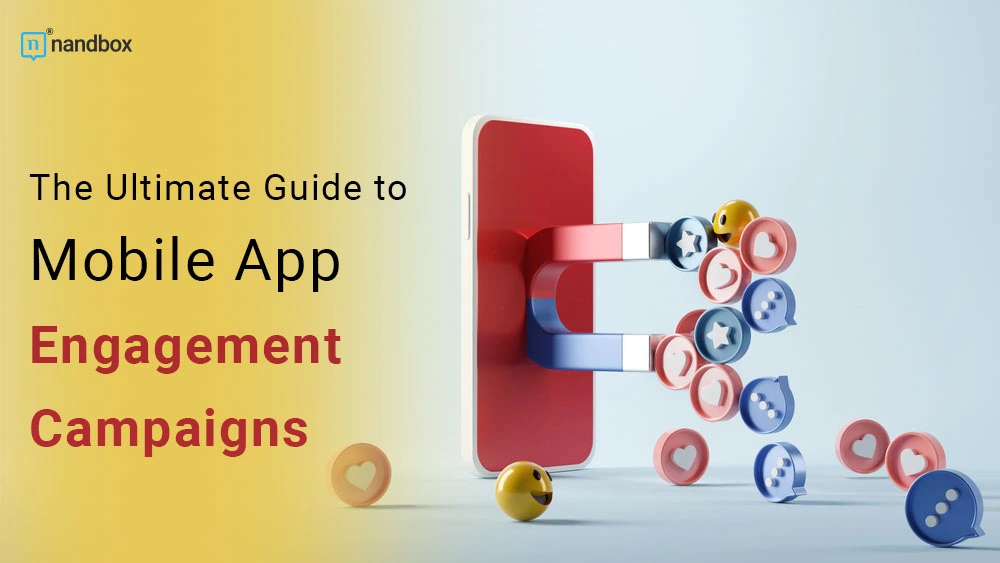Maximizing Mobile App Engagement Campaigns: Tips and Strategies
With over 8 million apps and nearly 7 billion app users, the competition is getting bigger and more fierce. We can possibly say the mobile app industry is reaching its peak. With so many users now depending to a great extent on applications, developers have no choice but to create more in order to fill any gaps. However, the increasing number of both apps and users also makes the competition tough for many. Now developers have to do everything to make their apps stand out and be unique in order to succeed. One of the methods that developers have been leveraging heavily is advertising and mobile app engagement campaigns. In this article, we will shed light on the best tips and strategies for executing effective mobile app engagement campaigns.
Why Do You Need Advertising Campaigns for Your App?
There is no doubt that leveraging advertising for your app is very essential, but how does it matter? A successful mobile app engagement campaign is capable of taking your app to a whole new level as it increases your app and brand exposure. This means that people can recognize your app or brand anywhere, as they now associate it with a good and memorable engagement campaign.
Mobile app engagement campaigns also help in acquiring and building a loyal and huge user base from the very start. The more you focus and exert effort on delivering value to users through your campaign, the more they will trust your brand or app and continue to use it.
Tips for Effective Mobile App Engagement Campaigns
1. Identify Your Audience
You must first determine and define who you’re addressing. Each app has a unique audience of users who are most likely to download and use it. Based on the type of your app and its purpose, you will need to specify the segment of the audience you are going to address. Typical criteria for choosing an audience include demographics like age, location, lifestyle, gender, economic level, etc. While demographics cover the majority of these details, you may additionally select your audience based on criteria like their behavior. Knowing who you’re trying to reach and why will help you determine the best approach for advertising your app and get it on the right track.
2. Include a Clear Call to Action
Another tip for achieving an effective mobile app engagement campaign is to include a clear call to action. At the end of your advertisement, you have to provide your users with a summary and a reason why they should download and use this app. This is easily accomplished through the inclusion of a creative and straightforward call to action. Keep in mind that the call to action has to be in an innovative and persuasive tone, not in a demanding one.
3. Create Engaging and Appealing Content
As important as the clear call to action is, it is still a small part of the whole ad or campaign. Zooming out and looking at the bigger picture is crucial to creating engaging content for mobile app campaigns. Every engagement campaign revolves around the content. It is what the user interacts with most and where they will find the majority of its features and functions. In order to persuade users, however, it is necessary to discuss these features and advantages in a fun and engaging manner. In addition, appealing images should also be part of your content
4. Give Out Rewards
Offering incentives and rewards is a great way to optimize mobile app engagement campaigns and attract a large number of users to your app. This can include things like discounts, exclusive content, or even virtual rewards like points. By providing tangible benefits for using your app, you can create a sense of loyalty and encourage users to continue engaging with it. For example, many apps include an exclusive offer with their ads that users would get if they downloaded the app. This helps increase app downloads significantly.
Types of Advertising You Could Use for Your App
1. In-app Advertising
In-app advertising is a type of mobile advertising that appears inside an app. This can include banner ads, interstitial ads, native ads, and in-app video ads. Banner ads are small, rectangular ads that appear at the top or bottom of the screen, while interstitial ads are full-screen ads that appear between content or app sections. Native ads are ads that are designed to blend in with the app’s content and seem more like a recommendation. In-app video ads are similar to interstitials in that they are full-screen, but they are dynamic and interactive. In-app advertising can be a great way to reach a large audience. However, it’s essential to make sure your ads are suitable and not intrusive, as users may become frustrated with them.
2. Social Media Advertising
Social media advertising is another popular way to advertise your app. Platforms like Facebook, Instagram, and Twitter offer various ad formats, such as sponsored posts, and video ads, that usually make great mobile app engagement campaigns. What makes social media advertising special is that these ads can be targeted to specific demographics, interests, and behaviors. This makes them highly effective at reaching your desired audience. Additionally, social media advertising usually has analytics tools. This allows for easy tracking and measurement of ad performance, so you can adjust your strategy as needed.
3. Influencer Advertising
Influencer marketing is a type of app advertising that has become extremely popular. App owners partner with social media influencers to promote your app to their followers. Influencers can be bloggers, YouTubers, Instagram influencers, or any other type of popular personality with a large and loyal follower base. By partnering with influencers, you can tap into their audience and reach potential users who may not have heard of your app otherwise. When choosing influencers to work with, it’s important to consider their audience type and see whether they fit your criteria or not. It is also important to consider your influencer’s reputation to avoid any negative impact that may occur on your application or brand.
4. Search Engine Advertising
Search engine advertising, which is also known as pay-per-click (PPC) advertising, is a type of app advertising where you pay for keywords related to your app and pay each time someone clicks on your ad. This type of advertising can be highly effective at driving app downloads. It allows you to target people who are actively searching for apps on the internet. Google Ads is one of the most popular platforms for search engine advertising. It’s critical to do thorough keyword research and create compelling ad content in order to get the maximum results from search engine advertising campaigns.
Final Thoughts
In conclusion, mobile app engagement campaigns are critical to the success of any app. It is what makes your application or brand shine, among others. Keep in mind that you are also not limited to the way you are going to advertise and introduce your application to users. You have various ways, from in-app advertising and social media to link exchanges. All you have to do is find the suitable way that would fit your audience the most and utilize it. By leveraging these strategies effectively, you can effectively increase your app’s exposure and attract a loyal user base.






